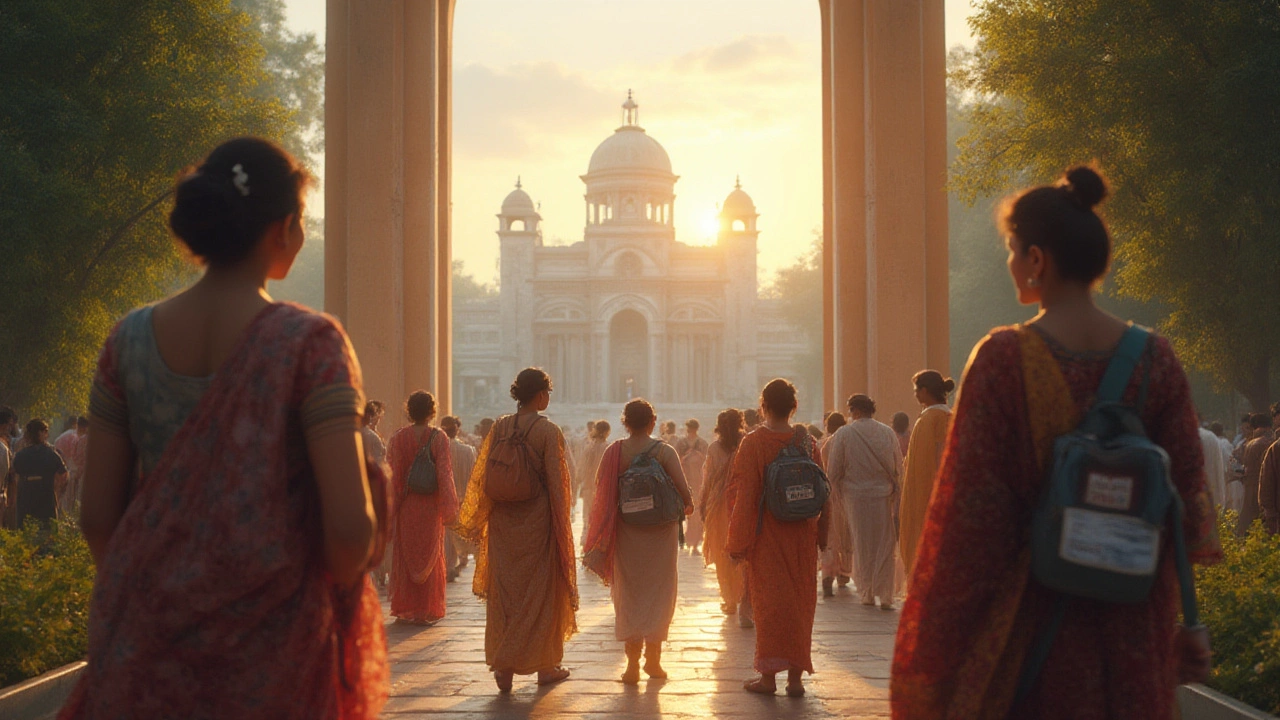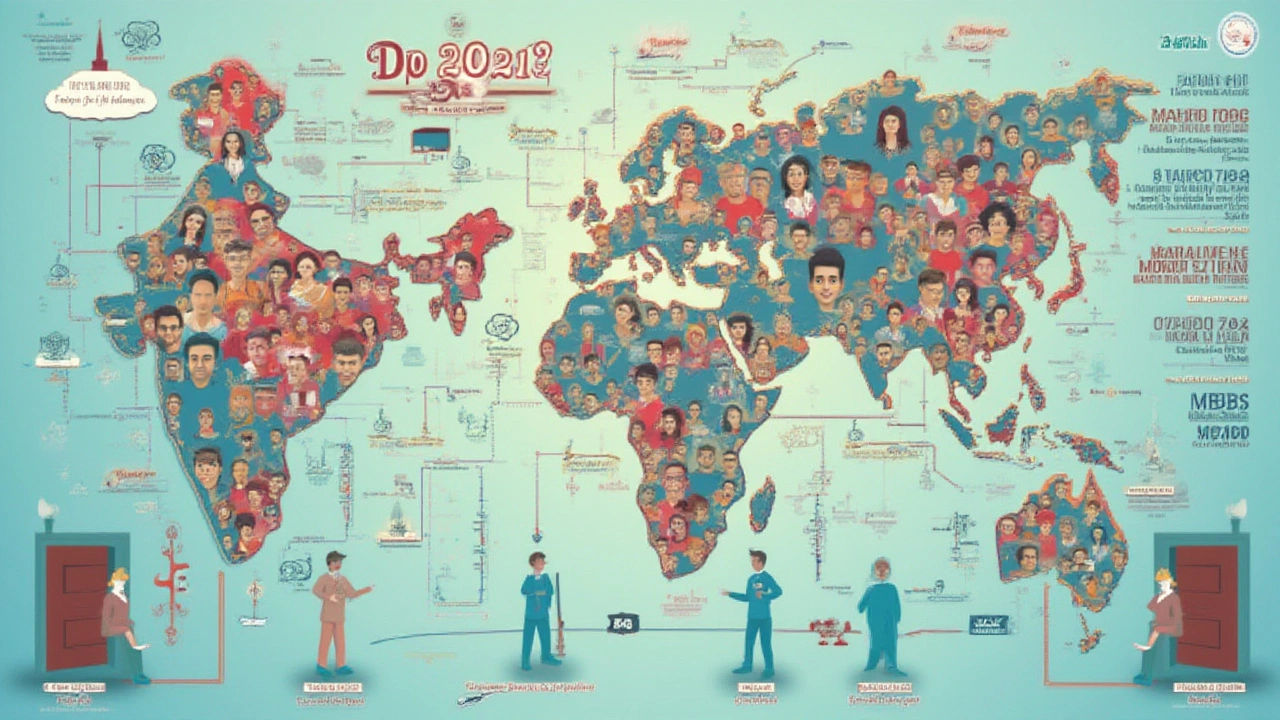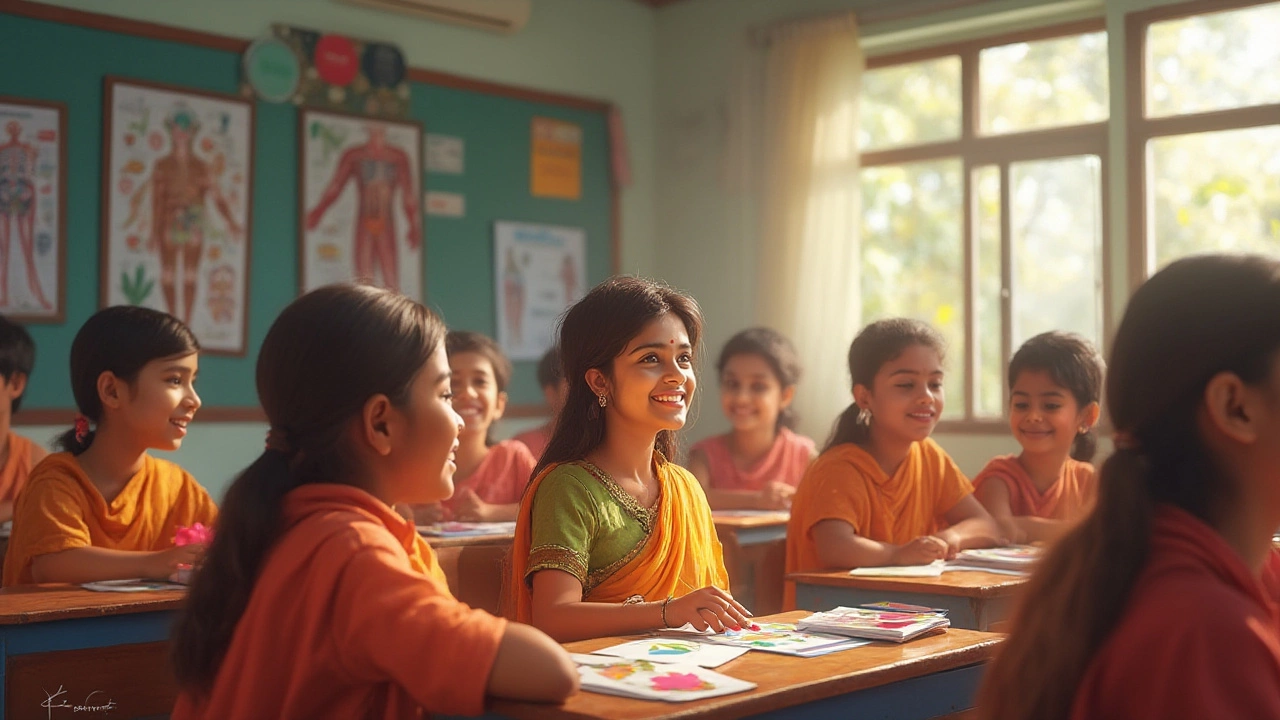Cracking NEET can feel like you’re stuck in a race where everyone’s sprinting for the same finish line—and the finish line keeps moving. Every year, lakhs of hopefuls fill out the exam form, chase dreams of wearing a white coat, and then bite their nails as cutoffs climb higher. Everyone wants a piece of the MBBS pie, but what really makes a NEET rank "the best"? It’s not as simple as saying "the lower, the better," though that’s definitely part of the story. The game changes with quotas, categories, and the college you’re eyeing. Picking the right dream—and knowing the numbers behind it—can save you a ton of stress (and second-guessing). So, what rank do you actually need to chase, and what does it unlock in 2025? Let’s break it down—no sugarcoating, just the real stuff.
Understanding NEET Ranks: More Than Just a Number
Let’s get it out of the way: scoring AIR 1 (that’s All India Rank 1) is the dream, but it isn’t the only dream worth having. In 2024, nearly 24 lakh candidates registered for NEET-UG, which is India’s single largest medical entrance test. Out of these, roughly 12 lakh cleared the cutoff, but just 1% landed in the top 10,000 ranks. Every year, cutoffs nudge up, toppers grab headlines, and everyone else wonders, “Where do I fit in?” But your NEET rank isn’t just a badge; it’s the key to a locker full of options—government MBBS seats, private colleges, AIIMS, state quotas, and even BDS, AYUSH, or abroad opportunities.
Here’s the kicker: The “best” NEET rank depends on what you want—are you going for that iconic government MBBS seat, chasing AIIMS Delhi, or happy to bag a spot in a private college with solid faculty? Each of these has its own rank league. As per the final seat matrix in 2024, there were about 1,09,145 MBBS seats in India (thanks, NMC, for expanding capacity). Yet, the top government colleges have less than 20,000 seats available for the General category after state quotas chip away at the pool.
Take AIIMS Delhi, the Everest of Indian medical colleges. Out of just 125 UG seats, fewer than 50 land in the general unreserved bucket—and the last NEET-UG rank getting an open seat in 2024 was AIR 57. Now, pan over to top state government colleges—like Maulana Azad, Seth GS, or CMC Vellore—where “safe” ranks for open, general seats typically hover below 2000–3000 (sometimes lower, depending on category and state quota rules). Private colleges give some breathing room—seats for MBBS there stretch to ranks as high as 2–3 lakhs, but the cost jumps.
| College/Type | Cutoff Rank (2024, General) | No. of Seats |
|---|---|---|
| AIIMS Delhi | ~57 | 125 |
| Government MAMC Delhi | ~93 | 250 |
| Government Medical College, KGMU Lucknow | ~3205 | 250 |
| Top Private MBBS (Low Fees, Minority Quota) | 50,000–80,000 | 60–150 |
| Low-Ranked Private MBBS (High Fees) | 1,75,000–2,40,000 | 100–250 |
Your target rank is a blend of ambition and reality—what you qualify for, what you can afford, and the state you belong to. Knowing this, obsessing over an AIR under 100 makes sense only if you’re set on AIIMS Delhi; if your dreams match other top colleges, 2,000–3,000 is your magic number. And if your Plan B includes private, BDS, or state quota seats, you’ve got an even wider net.
Don’t forget, there are plenty of stories about students who just missed AIIMS but found a killer learning experience in less-hyped colleges. Many MBBS doctors today hail from non-glamorous campuses but went on to ace postgrad NEET PG and land the life they wanted. NEET rank is important, but it’s not the only story.

What Rank Gets You Into Which College? A Closer Look at NEET 2025 Admissions
This is where most candidates trip. They think, "If I’ve scored, say, a 10,000 AIR, am I doomed to NRI quotas or massive fees?" Here’s what the 2024 counseling stats tell us, and what you can expect in 2025, given the latest seat expansions and slight changes in the reservation system.
For the NEET all-India counseling (that’s 15% of government MBBS and BDS seats available for everyone regardless of domicile), the general (unreserved) cutoff floats around AIR 18,000–22,000 every year. OBC, SC, and ST categories can sometimes grab government seats up to AIR 1 lakh, provided state quotas click in their favor. In states like Tamil Nadu, Maharashtra, and West Bengal, the state quota rank (the 85% batch) can look very different from all-India ranks; local students fare better, often at higher ranks. For example, a Maharashtra student can get a government seat at a state medical college with an AIR of 30,000–40,000, but outsiders sometimes don’t stand a chance.
Private colleges aren’t all the same either. Some, with reasonable fees (think under ₹8–12 lakhs per year), see intense competition—the best private spots go as low as AIR 25,000, and for popular cities or Christian/minority-run institutions, it can be even tighter. As you move up the AIRs (think 70,000–2,00,000), most open seats are private, and the fee tags climb. By AIR 2–3 lakhs, you’re usually looking at paid, management, or NRI quota seats (with annual bills north of ₹18–30 lakhs or more).
For BDS (Bachelor of Dental Surgery) and AYUSH courses, the pressure drops off a little. Government BDS seats close at AIRs around 32,000–44,000 for the unreserved pool, depending on the state. AYUSH courses (like BAMS, BHMS, BUMS) see cutoffs stretching from AIR 50,000 all the way past 2 lakh in some years, especially in North and East India.
Here’s a quick breakdown of NEET ranks and what they could fetch (2024 trends, give/take 10% variation for 2025):
- AIR 1–100: AIIMS Delhi, MAMC, CMC Vellore, all the top government MBBS with full scholarships and fame to go with it.
- AIR 100–2000: Other AIIMS campuses, top government colleges across metros, high in state quotas, excellent faculty and exposure.
- AIR 2,000–20,000: Most government medical colleges via the all-India and state quota, BDS at top institutions, solid internships and clinics.
- AIR 20,000–50,000: Lower-ranked government MBBS, most private MBBS at reasonable fees, possibly BDS in good metros.
- AIR 50,000–1,00,000: Private MBBS and BDS, some government BDS, best seats in AYUSH courses.
- AIR 1,00,000–2,40,000: Private and management quota MBBS, mostly high-fee, a few BDS/AYUSH, less competition for seats but higher costs.
What if you’re on the “wrong” side of these cutoffs? Many students aim for the top, but end up discovering their best fit lies elsewhere. Going abroad (think Georgia, Russia, Ukraine, Philippines) is an option, but these seats require that you still clear NEET. Many solid doctors in India right now did their MBBS outside the country—and came back for postgrad studies.
If you have a reservation (OBC, SC, ST, EWS, PWD), your “best” rank for a good MBBS seat can be up to 2–3 times higher compared to general. Always check your state’s exact quota breakdown—just being category eligible doesn’t guarantee a seat if you’re below the cutoff for that specific year and batch.
Why are all these numbers shifting every year? For starters, the total number of seats is going up—a few thousand added almost every year. Competition, though, isn’t shrinking; instead, it’s getting tighter because more students clear the basic cutoff (which was just 137/720 for general and 107/720 for reserved in 2024) and hope for a shot at medical college. That’s why you’ll see headlines about NEET air 5000 missing a government seat in Delhi, while in a smaller state, the same rank can bring the jackpot.

Tips, Realities, and How to Decide Your "Best" NEET Rank
Let’s put the panic aside: not everyone needs to be in the top 100 to become an outstanding doctor. There’s more to picking your NEET target than blind ambition or pressure from social media. Here are a few things people forget while deciding what counts as the “best” rank—and how to play your cards for the best shot.
1. Dream College? Know Its Trends: Every medical college, especially seniors like AIIMS, MAMC, or KEM, posts its last closing rank publicly. Before you set your sights, look at the last 3 years’ cutoffs for ALL quotas (all-India, state, OBC, EWS, etc.). The National Testing Agency (NTA) and MCC Counseling websites make this public; use that data, not just random YouTube advice.
2. State Quotas Change Everything: If you have state domicile, explore the lowest closing ranks for government seats in your home state. States like Kerala and Rajasthan have shockingly low cutoffs for their own students, while Delhi and Maharashtra sometimes close earlier. Don’t miss registration deadlines—they’re surprisingly strict, and many great candidates miss out on "easier” state seats just by skipping paperwork.
3. Money Matters. Plan Ahead: If you know your only shot is a private seat, calculate realistic costs (including hostel, miscellaneous fees, year-on-year hikes). Start applying for scholarships, education loans early. Some state governments offer bonds that help with repayment AFTER you finish your degree, if you agree to serve locally post-MBBS.
4. Reservation Works if You Use It Smartly: The competition inside reserved categories is fierce, not a cakewalk. But it still makes sense to analyze specific quota openings. If you qualify for EWS, OBC, SC/ST, or PWD, look at cutoffs from 2022–2024 in both all-India and your state quota batches. A difference of thousands of ranks can mean the chance of a lifetime, especially in less-hyped states.
5. Don’t Ignore Alternate Tracks: NEET is the gatekeeper for several career-building courses, not just MBBS. BDS, BAMS, BHMS, and even BPT (Physio) launch solid careers. Sometimes, a top BDS seat is better than a struggling MBBS at a low-rated, high-cost private college. If you plan to try NEET again but want a safety net, lock in a seat this year, then use it as a backup.
6. Focus on Score, Not Just Rank: Rank depends on shifts in paper difficulty and peer performance, but scores are more stable. An unreserved MBBS government seat in 2024 called for a score around 610–635/720, but that shifted year to year. Safe bet for 2025: target at least 630–650 for the "best" government MBBS shot, 480–540 for BDS, and a bit lower for private MBBS/AYUSH.
7. Overseas Dreams? Don’t Take NEET Lightly: For MBBS abroad, NEET qualification (not just score) is mandatory. Each country has its own pros and cons—look at FMGE passing rates (Foreign Medical Graduate Exam), check NMC’s approved colleges list, and compare ROI to private options back home.
8. Counseling Is a Game of Strategy: Don’t just lock the first seat you get offered. In MCC AIQ rounds 2, 3, and even the Mop-Up rounds, candidates bag dream seats as others vacate. Track real-time seat matrix updates. Plan for 2–3 rounds before giving in—sometimes patience gets you a far better college/rank pairing than rushing in Round 1.
To sum up, “Which NEET rank is best?” can’t be answered with a single number. Aim for the best score and rank YOU can realistically achieve, but know your target by looking at actual college cutoffs and trends. The "best" is a moving target, based on your dreams, category, state, and, yes, financial plans. Be real, be ready, and remember—thousands make their doctor dreams come true each year at ranks nowhere near AIR 1. Your number doesn’t define your future; what you do with your seat does.



